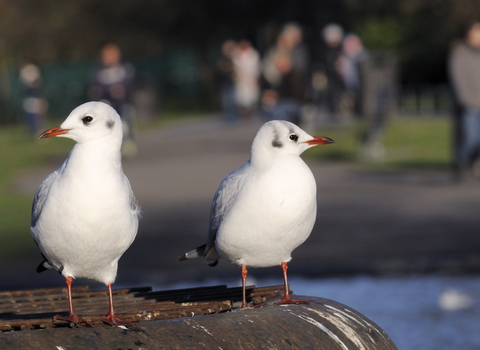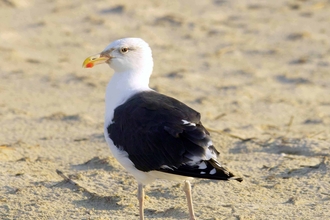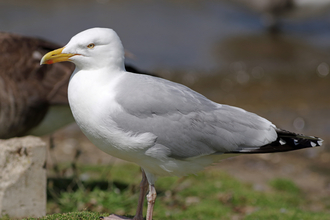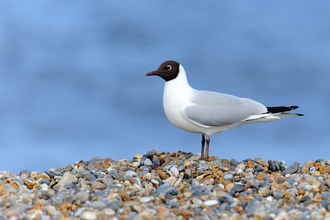What are gulls?
Gulls are members of a large, widespread family of seabirds. Often known as seagulls (though no species is actually called a seagull, and many are found far from the sea), they sometimes get a bad reputation for stealing chips. But gulls are intelligent, adaptable and often beautiful birds.
However, they're notoriously difficult to identify. Entire books have been dedicated to telling one gull from another, but even these barely scratch the surface. Their plumage changes as they age and there's a great deal of variation within species. This page is just a taster, highlighting the key features to look for, mostly in adult gulls.
Which gulls am I most likely to see?
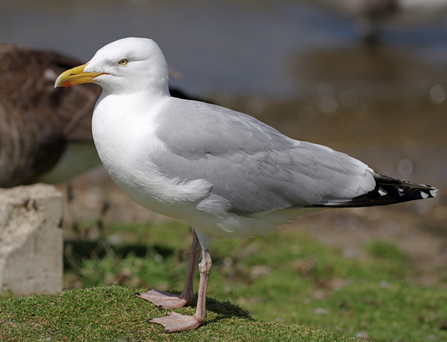
Herring gull ©Gillian Day
Herring gull
The stereotypical gull. Adults are told from most gulls by their large size, pale grey upperparts and pink legs. In summer they have a white head, which develops dark streaking in winter.
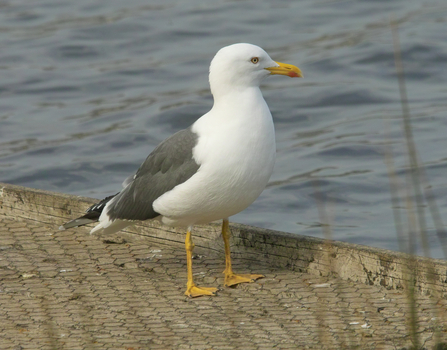
Lesser black-backed gull ©Derek Moore
Lesser black-backed gull
Similar size to a herring gull, but often slightly smaller. Adults are recognised by their slate-grey upperparts (contrasting with blacker wing-tips) and bright yellow legs.
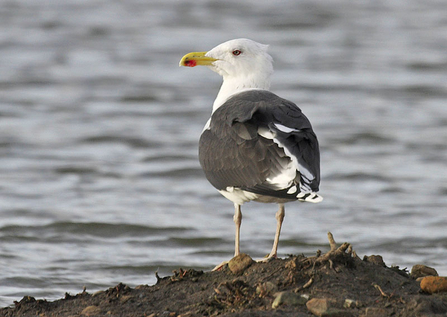
Great black-backed gull ©John Bridges
Great black-backed gull
The world's largest gull! Distinguished by huge size, heavy bill and large square head that makes the eye seem small and beady. Adults have blackish upperparts and pale pinkish legs.
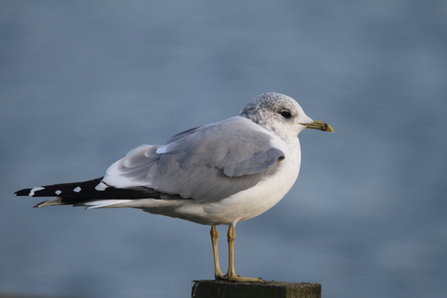
Common gull ©Tom Hibbert
Common gull
Like a much smaller, cuter version of a herring gull. Adults have pale grey upperparts, yellow-green legs, a dark eye and a thin yellow bill. The legs and bill are duller in winter, when the head is streaked grey.
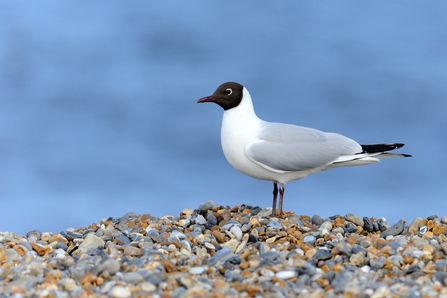
Black-headed gull (summer) ©Amy Lewis
Black-headed gull - summer
Smaller than most gulls in the UK. Adults have pale grey upperparts and dark reddish legs and bill. In summer the head is dark brown (not actually black!). In flight, look for a distinctive white leading edge to the wing, visible at some distance.
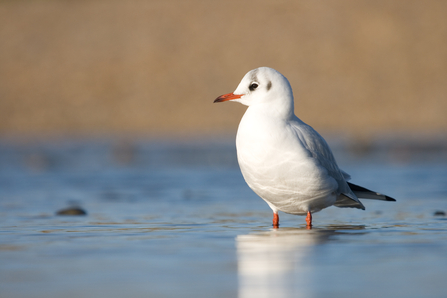
Black-headed gull (winter) ©Tom Marshall
Black-headed gull - winter
In winter the head is mostly white, with dark smudges on the ears and above the eyes. The bill also develops a dark tip.
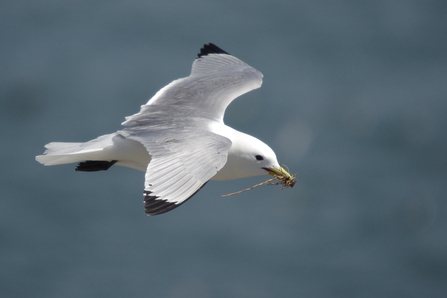
Kittiwake ©James Rogerson
Kittiwake
Rarely found away from the coast. Slightly larger than black-headed gull, with dark grey upperparts (paler towards the wing tips), a bright yellow bill and black legs. The solid black wing-tips lack the white spots of common gull.
Rarer gulls
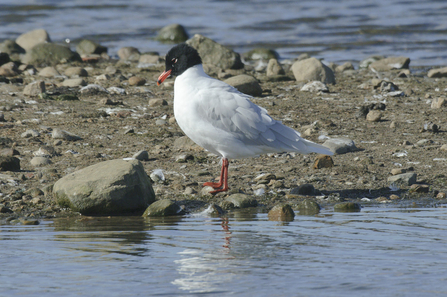
Mediterranean gull (summer) ©John Bridges
Mediterranean gull
Slightly larger than the similar black-headed gull, but adults distinguished by paler upperparts, scarlet bill and legs, white wing-tips and jet black hood (rather than brown) in summer. In winter they have a dark mask stretching behind the eye.
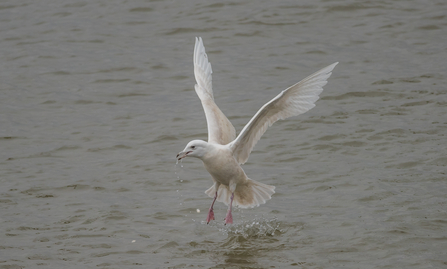
Iceland gull ©Janet Packham Photography
Iceland gull
A winter visitor. Iceland and glaucous gulls are the only large gulls with whitish wing-tips (at all ages). Compared to glaucous, Iceland gulls are smaller, with a thin bill, small head and large eye that conveys a gentle impression.
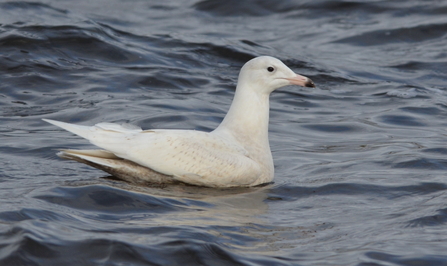
Glaucous gull ©Adam Jones
Glaucous gull
A winter visitor. Compared to Iceland gull, glaucous gulls have a heavier build, with a larger bill and smaller eye, which can give them an aggressive expression.
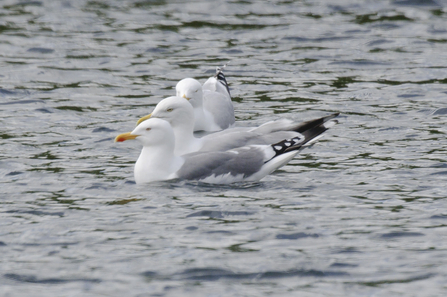
Yellow-legged gull ©John Bridges
Yellow-legged gull
Extremely similar to herring gull, with which it can easily be confused. When the adult's bright yellow legs aren't visible, look for a strong bill with a large red spot (often extends to the upper mandible) and a slightly darker back. In autumn/winter, the head is usually less streaked than herring.
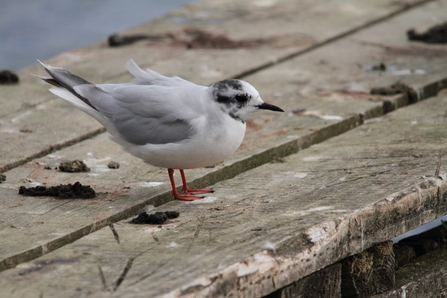
Little gull ©Tom Hibbert
Little gull
Even smaller than a black-headed gull, with a small, dark bill. Adults have pale grey upperparts, dark underwings and white wing-tips. In summer they have a black hood, but in winter just a black cap and ear spot.

